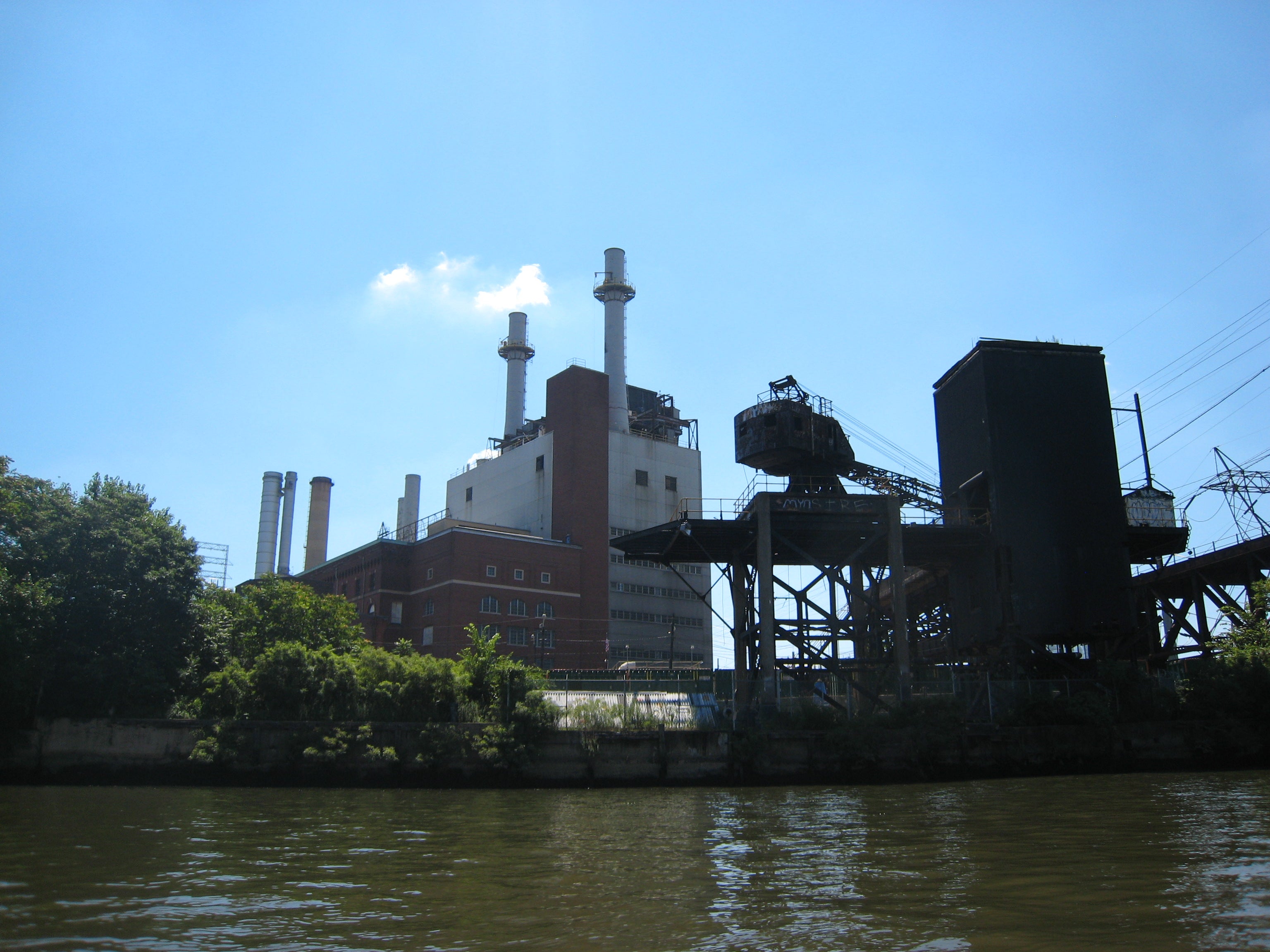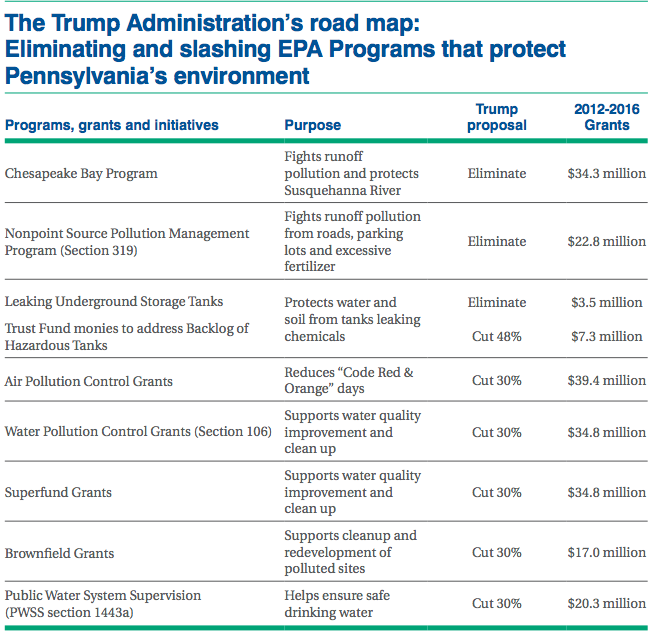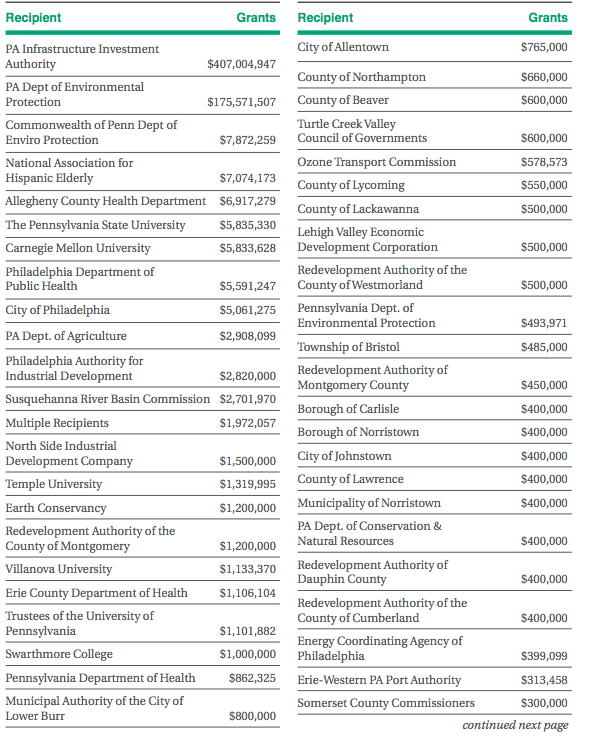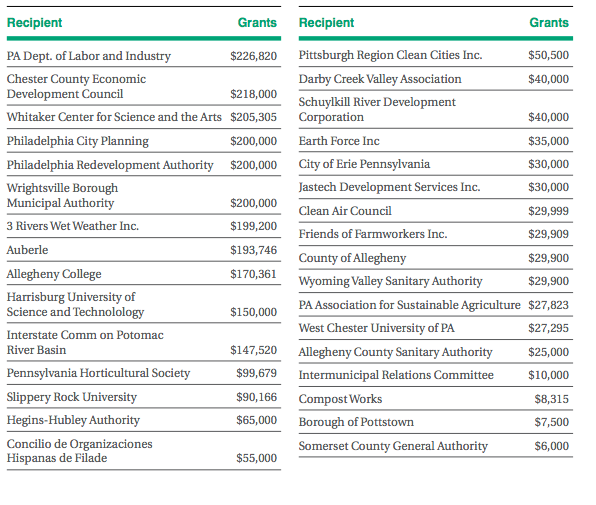Trump’s proposed cuts to EPA could cost Philadelphia millions, report finds

President Donald Trump’s plan to cut the U.S. Environmental Protection Agency’s (EPA) budget by 30 percent would put Pennsylvania residents and economy at great risk, according to an Environmental Defense Fund (EDF) report that examines the programs funded by the federal agency.
EDF says EPA has provided $225 million in grants to Pennsylvania over the last five years, including over $17 million to Philadelphia agencies and academic institutions.
“Nearly every single program that EPA runs and supports in the state would be eliminated or deeply cut,” said EDF’s Elgie Holstein.
Philadelphia Office of Sustainability’s Christine Knapp said the proposed budget would have “immediate and drastic effects” on many environmental programs that Philadelphians rely on.
According to EDF’s State of Risk report, the Philadelphia Department of Public Health received $5,591,247, and the City of Philadelphia $5,061,275, between 2012 and 2016. Knapp said that funding pays for air pollution controls and safety protections for drinking water.

The Health Department’s Air Management Services received a big part of EPA funding for enforcing air quality regulations and monitoring pollution, Knapp said. According to experts, AMS is already underfunded — it has only four inspectors to enforce air and noise pollution in the entire city. Knapp said the budget cuts could make the situation worse, forcing AMS to reduce its staff even further.
The budget cuts could also leave the city with fewer resources to face the challenges posed by the city’s industrial past, Knapp said.
“We have older housing stock that still has a lot of lead piping and lead paint that has an impact on public health, we still have high rates of asthma — especially among children of color — and we still have to make sure that we’re providing safe drinking water for all of our residents,” Knapp said.
The EPA did not respond to multiple requests for comment. If the EPA does make a comment, PlanPhilly will update this story.
Trump’s administration would completely eliminate the Nonpoint Source Pollution grant program, which protects the water intakes for more than 8 million Pennsylvanians from runoff contamination. This would also affect Philadephia, which uses water from both the Delaware and the Schuylkill rivers.
Knapp said the EPA funds water quality programs, such as a contamination warning system designed with the Philadelphia Water Department and the city’s nationally recognized green stormwater infrastructure program. The budget cuts would mean less innovation, and maybe taking steps backward, she said.
“Jurisdictions will still need to comply with federal mandates without the funding to do so,” Knapp said. “In practice, this means local and state taxes may need to go up in order to balance the revenue decline, and that could force communities like Philadelphia to reduce funding in other local priorities.”
Trump’s budget proposal would also cut brownfield grants that support cleanup and redevelopment of polluted sites and superfund grants that supports water quality improvement and cleanup in 30 percent. Even if some funds are already allocated, a cut would mean less supervision in the coming years.
The Philadelphia Authority for Industrial Development received almost $3 million in EPA grants for remediation and cleanup of polluted soil. For example in 2016, the EPA granted $200,000 for the cleanup of a former iron foundry, animal feed supplement manufacturer, and propane distributor in Grays Ferry that was contaminated with arsenic, benzo(a)pyrene, and metals.
The Philadelphia City Planning Commision and Philadelphia Redevelopment Authority also got $200,000 each for revitalizing and developing of those areas.
The EPA also gave $399,099 to the Energy Coordinating Agency of Philadelphia for workforce development and job training. ECA’s Thomas Flaherty said they’ve been training students from zip codes with both high unemployment and high concentration of brownfields sites in hazardous waste handling, lead and asbestos remediation, waste treatment and stormwater management.
Flaherty said the funding is not under immediate threat, since they’re in a second multi-year grant with the EPA. But if the program is cut in the long-run, Philadelphia would lose out on training hazardous waste cleanup experts for the 160 brownfields sites and four superfund sites on the national priority list located in the city, and the smaller toxin issues in homes such as lead and asbestos.
“The implication of not investing in cleanup projects and developing the necessary waste remediation professionals is that we might leave our grandchildren with the same toxins left by our grandparents,” Flaherty said.
According to the report, the Trump administration would also eliminate funding for environmental research grants — Temple University received $1,319,995 over the last five years, Villanova University $1,133,370, Swarthmore College $1,000,000, and the University of Pennsylvania $1,101,882 — and reducing funds to notify residents about what chemicals are being stored and used at industrial locations by almost 40 percent.
Clean Air Council’s Russell Zerbo said the cuts would certainly be an assault on public health. But looking at Congress’ reaction to the budget proposal in July, he thinks the budget will ultimately make far small than the 31 percent proposed by Trump.
“President Trump’s approval rating has hit a new low and the overwhelmingly conservative House Appropriations Committee only approved a fraction of his proposed EPA cuts,” Zerbo said.
WHYY is your source for fact-based, in-depth journalism and information. As a nonprofit organization, we rely on financial support from readers like you. Please give today.








